Click on the links below for useful information
Dampness, Condensation and Mould - Useful information
Sometimes you will hear people say a building (whether their home, office or other) is damp - but what does this mean and how can it be addressed?
There are essentially four situations that are commonly referred to as damp:
- Rising Damp
- Penetration Damp
- Defective Plumbing Damp
- Condensation
If you have any concerns about damp in your home, please report it to us as soon as you are aware of it on 0141 774 4433 or admin@ruchazieha.co.uk
How we deal with the matter depends on the type of damp. there are four situations normally referred to as "damp". A short summary of each of these is given below. before we can determine what action needs taken, we need to determine what type of dampness it is and what are the root causes.
There is some useful information on the Energy Trust website about the most common issue of condensation - https:/energysavingtrust.org.uk/advice/fixing-damp-and-condensation
What is Rising Damp?
Rising Damp is caused by water rising from the ground into the walls of a building through capillary suction of brick or stone. Water breaks through or around a broken damp proof course and rises into the wall through the porous mortar and masonry used.
This type of damp only affects ground floor rooms and basements. Rising Damp will usually rise up a wall to almost 1 metre, after which the sheer weight of the water and the effect of gravity prevents it rising further. Rising Damp usually leaves a tide mark on the walls which often looks like a white or off-white powder on the wall, paint may also be flaking as a reaction to those salts.
What does Rising Damp look like?
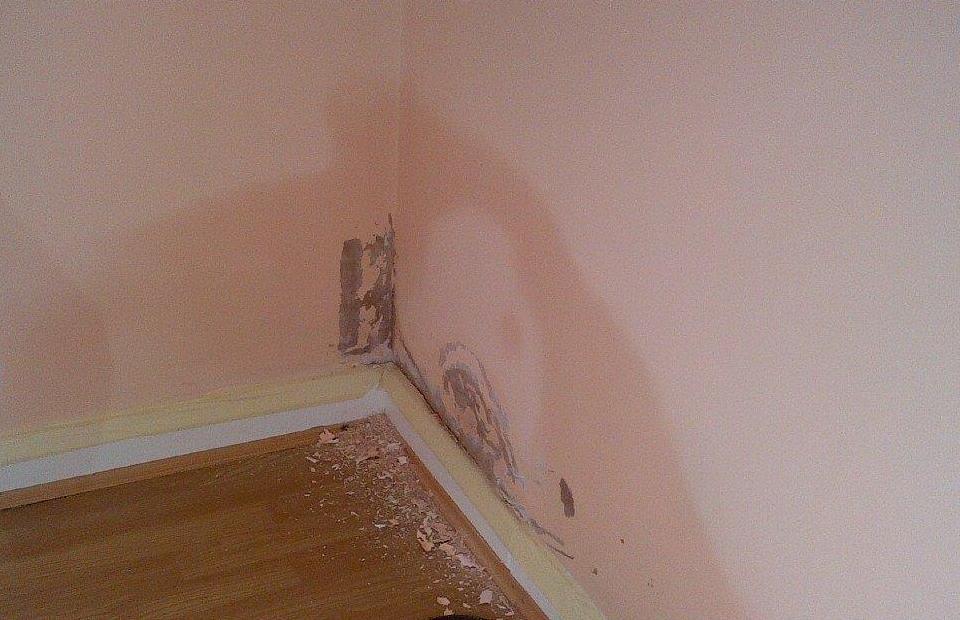
What is Penetrating Damp?
Penetrating damp occurs when water penetrates the walls of a property through an external defect like cracked rendering, missing pointing to the brickwork, a loose tile on the roof, a blocked gutter, leaking water pipe, seals around windows failing, old brickwork that has become porous, an existing cold bridge or perhaps spalled bricks/concrete.
What does Pentrating Damp look like?
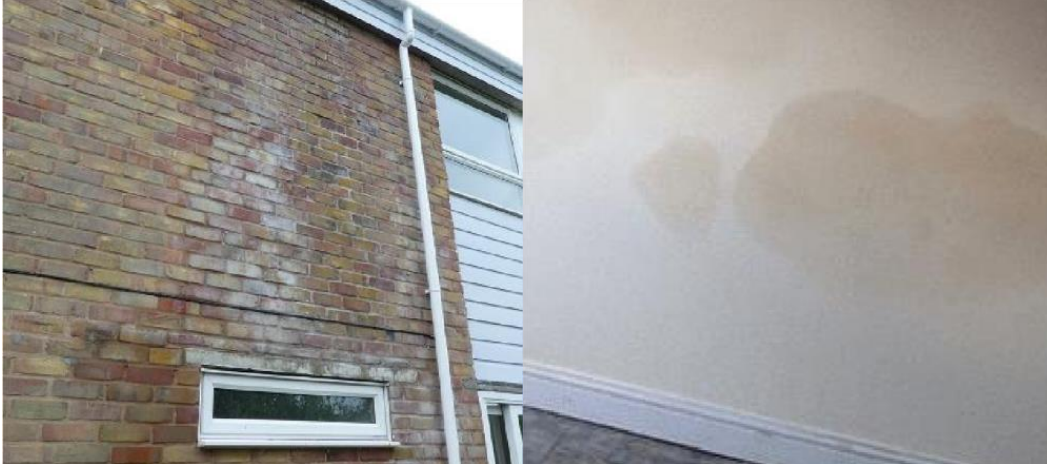
What is Defective Plumbing Damp?
Whether it is a leak from the toilet, shower, sink or pipe, defective plumbing can affect internal walls, and ceilings. it can also show on floors if the leak is from a water pipe under the floor or a leak in a radiator pipe. Appearing as an obvious damp patch, often long after the defect has occured and will appear no matter the weather outside. However it may get worse after a certain utility is used. Common causes are leaks behind the sink where a pipe has corroded, leaks under shower trays and leaks behin the WHB or WC where the utilities have been boxed in.
Although rare on larger leaks as the area will be too wet and water waste is generally poisonous to mould, it can appear if left untreated. Rot in wooden joists and floorboards is also a risk of leaving a plumbing defect untreated. Which, in severe cases, can lead to them collapsing.
What does Defective Plumbing Damp look like?
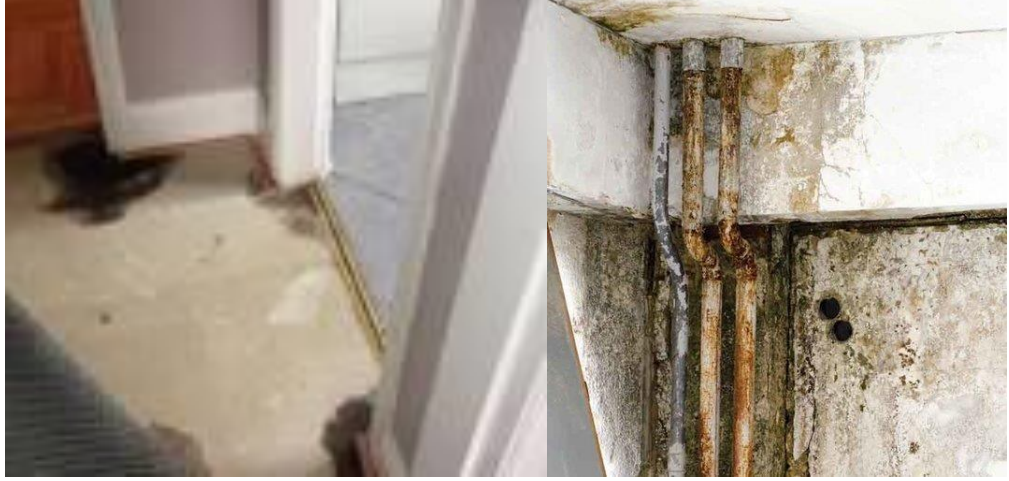
What is Condensation?
Some damp is caused by condensation. this can lead to growth in mould that appears as a cloud of little black dots. Condensation occurs when moist air comes into contact with a colder surface like a wall, window, mirror etc. The air can't hold the moisture and tiny drops of water appear. It also occurs in places the air is still, like the corners of rooms, behinf furniture or inside wardrobes.
Condensation is commonly caused by steam build-up from hot showers, drying clothes inside and cooking. If there's no wat for that excess moisture to escape, it could eventually lead to condensation damp and mould problems.
While it is commonly seen on windows, condensation can also appear on any wall in your home if there is inadequate air ventilation in the building. Warm humid air produced through normal everyday activities such as cooking and bathing is trapped in the atmosphere and finds its way onto the walls and wallpaper where it releases water droplets that can ultimatly damage paint, plaster or wallpaper and lead to potential health hazards.
When there is a lack of ventilation and humidity levels remain high in the property, mould is able to grow. Mould typically grows on surfaces that have become damp due to high humidity levels in the property. because windows and corners tend to be the coolest areas in the house, condensation arises, its important to ventilate your home and keep the air circulating to avoid damp air, which can be caused by cooking with no extractor fam on or windows opne, drying clothes close to a radiatoe and showering with no extrator fan on or window open.
The most common cause of mould is condensation -water which collects as droplets on a cold surface when humid air is in contact with it. Condensation is most commonly found on or around windows. Condensation mould can often be found behind large objects such as beds and wardrobes. In areas that do not get much ventilation - especially when up against an external wall.
There are many contributing factors to condensation and many are a result of normal day to day living. From simple actions such as boiling a kettle or drying clothes inside, there is a lot that we do every single day that adds to the amount of moisture in the air. To get rid od this type of mould, first you have to get rid of the excess moisture.
What does Condensation look like?
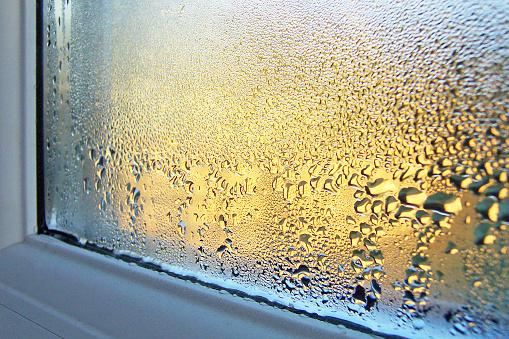
What is Mould?
Mould is a fungus that requires high levels of moisure to survive. Mould spores exist in the atmosphere and are invisible to the human eye. They only become visable when they rest on a surface, where they can grow and multiply if untreated. depending on the type of mould, the appearance varies. Black mould is very common in homes that have high levels of condensation. For mould to be able to germinate on a surface, it requires the surface to be wet with condensation.
What to do if you have mould in your house
If you see the early states of mould, it is important to clean it off the surface with bleach or fungicidal wash. Be careful not to upset mould by brushing, dusting or vacuuming. This can cause the mould to spread to other areas of the house.
if soft furnishings or carpets have been affected by mould, it is important to clean them thoroughly to remove the mould spores.
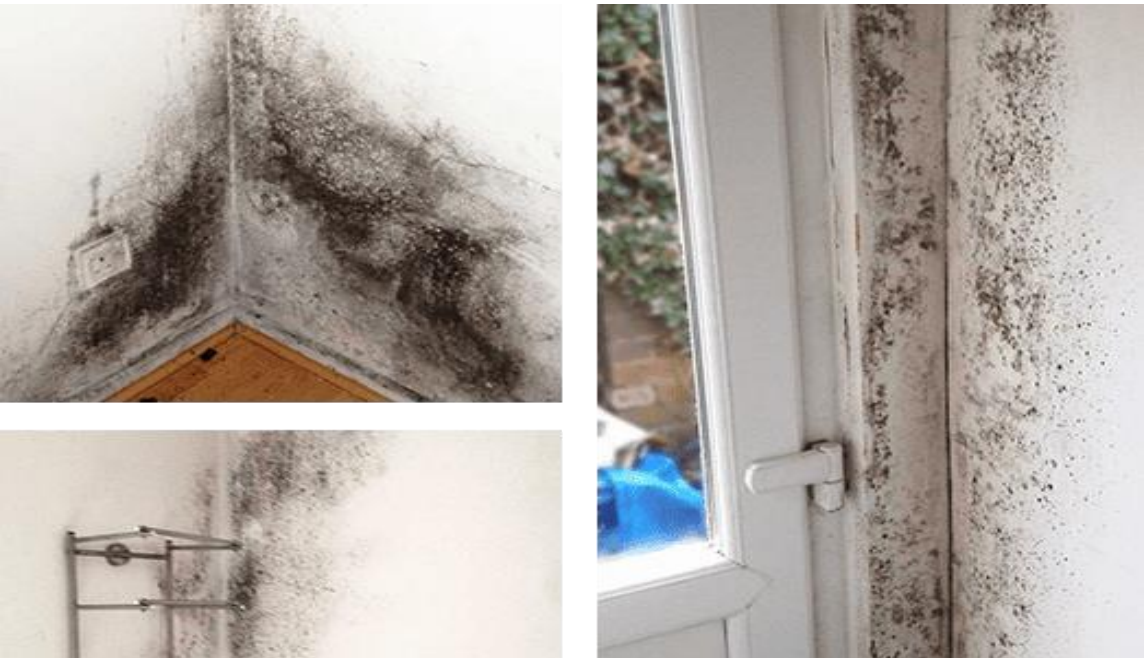
If you do have mould growing, it is good to clean it off straight away to minimise an health risk, but you also need to fix the underlying damp problem to stop it coming back. if you do not have any leaks or rising damp issues, then the problem is almost certainly condensation.
How to deal with Condensation and Condensation Mould in your house
Not all condensation issues need to be treated professionally. Fortunately, treating condensation is often a matter of undertaking some simple changes that increase the air ventilation and circulation in your home. if you are not currently doing so, you may want to try some of the following recommendations to minimise the amount of moisture in your home.
There are several things you can do to help avoid problems in the future:
1) reduce the amount of moisture produced in the first place by:
- keeping lifs on pans when cooking, use the minimum amount of water needed and turn down the heat once the water has boiled (this will also save you on energy costs)
- when you are filling up the bath, run the cold water first then add the hot - this will reduce up to 90% of the steam which leads to condensation
- using yur extractor fans in kitchen and bathrooms
- drying clothes outside when possible or dry in the bathroom with the door closed, window open and extractor fan on. Avoid drying clothes on radiators
- if you use a tumble dryer make sure it is vented to the outside
- always use the extractor fan when you are cooking, showering or bathing
- when using showers or baths, keep the windows open and extractor fans turned on. k
- Keep the window open, the extractor fan on and the door closed for a period after to allow the excess moisture to escape,
- keep any window vents open
- opening windows often will prevent moisture from being trapped, allowing your home to ventilate more effciently
- check your vents or air bricks to ensure they are clear and dont block off any other vents.
3) close the door and open the windows when you are using the kitchen and bathroom
4) make sure air can circulate by leaving gaps between furniture and the wall - try to leave a gap of atleast 100mm
5) air your wardrobes and cupboards regularly, don't overfill them and keep clutter to a minimum.
Please remember - if you have any concerns about damp and mould in your home, report it to is as soon as you are aware of it.
Reporting concerns will allow us to inspect and check what is causing the issue so it can be dealt with correctly. You will not be able to deal with rising, penetrating or plumbing dampness on your own and Ruchaize will need to deal with this with the correct building professionals. Most condensation issues can be dealt with by you directly by implementing the recommendations above. However, not all can and it would still be best to report any concerns about condensation, and especially condensation mould, so we can offer assistance and advice on how best to deal with it.
